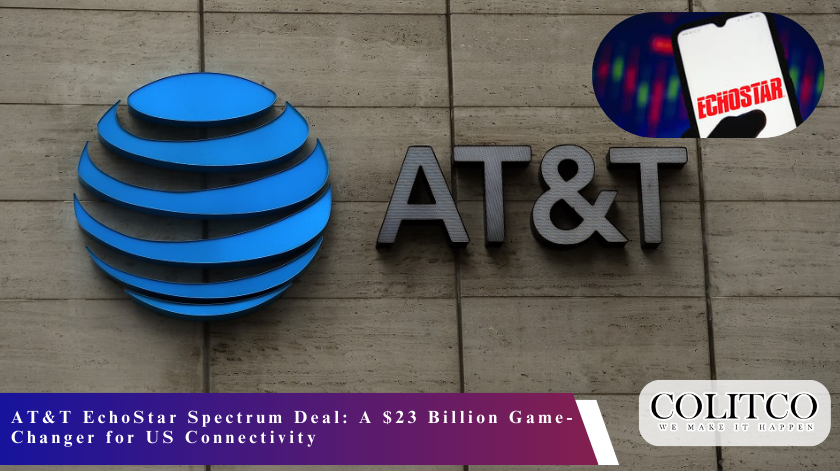AT&T Confirms $23 Billion Spectrum Purchase
AT&T has agreed to buy spectrum licences worth $23 billion from EchoStar. The transaction consists of 30 MHz of 3.45 GHz spectrum and 20 MHz of 600 MHz spectrum with coverage in approximately 400 markets.
In effect, the transaction will allow AT&T to enhance its ability to provide next-generation 5G services and fixed-wireless home internet services. Yet to be notified of the regulatory nod, the transaction is expected to close by the middle of 2026.
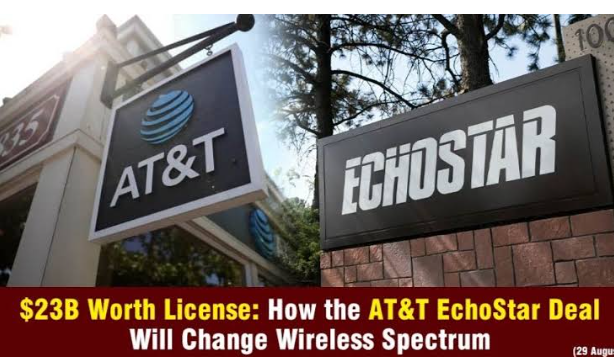
AT&T will acquire $23 billion in spectrum licences from EchoStar
Why Did AT&T Acquire EchoStar Spectrum?
Landscaping and beautification would be needed in the work for mid-band and low-band opportunities secured by this AT&T-EchoStar spectrum deal. It will provide expansion for 5G reach and service quality in urban and rural areas.
According to AT&T CEO John Stankey, the spectrum essentially lets the company achieve efficiency without the costs of a network. This does give scale to the process of densification, which is a costly process that usually stalls a rollout.
According to industry analysts, mid-band spectrum is the best for wide-area coverage, while low-band spectrum is the best for penetrating buildings, a very important issue for 5G deployment.
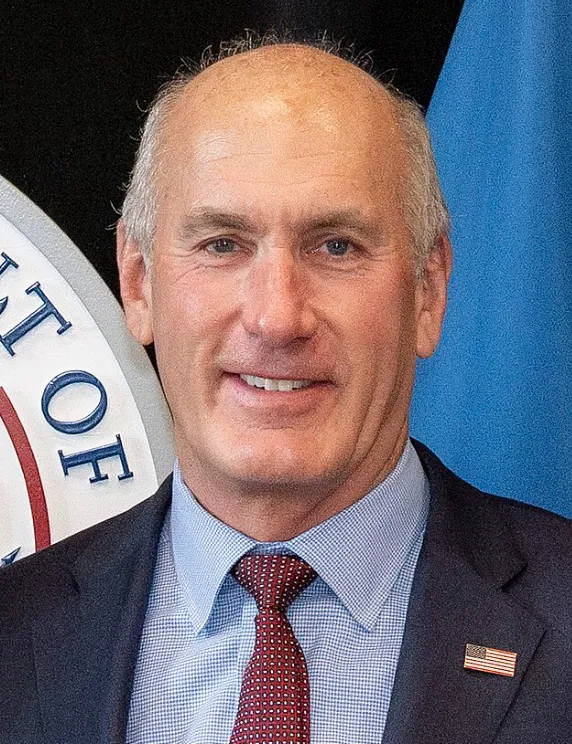
AT&T CEO John Stankey says the spectrum boosts efficiency without costly network construction
AT&T EchoStar Spectrum Deal Complements Fixed-Wireless Growth
AT&T expects the coming together of the deals to enlarge its fixed-wireless services. The company estimates 900 000 other fixed-wireless customers could be supported by the spectrum could support.
Fixed-wireless broadband is considered a near-term solution in markets awaiting fibre installation. AT&T will start migrating those customers to fibre once the infrastructure has been laid down, which will create long-term value in converged service bundles.
This fits well with AT&T’s strategy to increase 5G wireless and fibre broadband so as to meet the demands of households trying to combine Internet and mobile solutions.
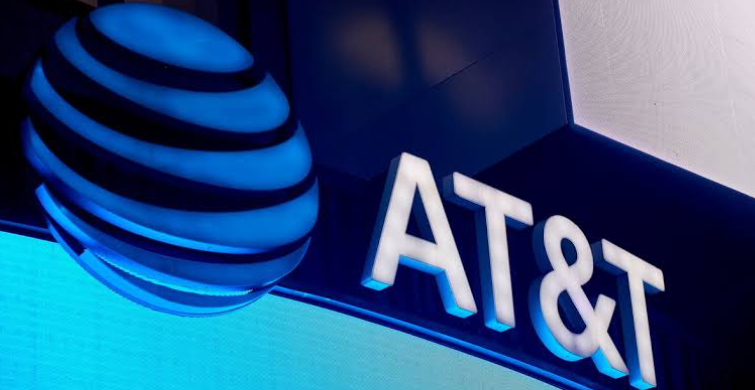
AT&T expects the deal to expand its fixed-wireless services
Will EchoStar Still Operate Boost Mobile?
Yes. EchoStar will continue to operate Boost Mobile, but with a different approach: one under which it will not build its own nationwide network but switch instead to a hybrid mobile network operator (MNO) status.
In other words, under the new Boost Mobile, operations will be maintained partly on AT&T’s network infrastructure, with its core systems maintained on its own. The model provides continuity for Boost subscribers but effectively marks EchoStars’ retreat from ambitions to become the fourth major wireless carrier in the US.
Increasingly so under growing financial and regulatory pressures, with the FCC becoming concerned about the limited use EchoStar was making of its existing spectrum licenses.
AT&T Achieves Scale Without Major Network Construction
One of the big advantages of being cost-efficient for AT&T is. 3.45 GHz can be deployed faster with the older equipment, and this helps accelerate 5G coverage.
The 600 MHz will take longer to allow implementation since the hardware is new, but the farther-reaching capacity is to serve rural America. Rather than the company(intending) Pfizer to sit spectrum and build new cell sites, AT&T saves-densification of billions in costs.
And it reiterates the 2025 financial outlook, which includes a US$20 billion share buyback plan for 2025–2027.
Does the Deal Solve FCC Concerns?
The AT&T-Acquire-EchoStar-Spectrum transaction looks to be a direct attempt at resolving the FCC’s concern that EchoStar was not optimising the use of key airwaves.
By transferring the spectrum into AT&T’s hands, regulators are confident that the resource will be put to more efficient use. This will create more competition, better connectivity in rural areas, and a speedier nationwide rollout of 5G.
For EchoStar, this sale eliminates regulatory risks and provides it with new capital. The stock price of EchoStar climbed nearly 70% post-announcement, reflecting investor relief in the revised strategy of the company.
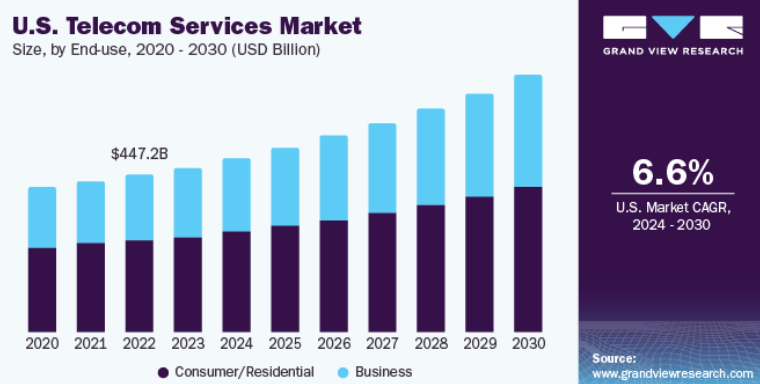
AT&T Paid a Premium for EchoStar Spectrum
Experts within the industry admitted that AT&T has paid a US$7 billion premium on the deal. In the official statement, CEO John Stankey presented the pricing as the cost of doing business in the market where the scarcity of spectrum brings much higher values.
Admittedly, analysts still consider the purchase as warranted because it places AT&T well against its rivals of Verizon and T-Mobile, in a 5G leadership contest.
EchoStar, in turn, obtains some much-needed economic breathing space while reshaping its presence in the American telecom business.
Concluding Remarks
The spectrum deal between AT&T and EchoStar marks the evolution of both companies, AT&T securing key airwaves for the growth of 5G and broadband, and EchoStar ultimately aligning their operations towards a hybrid MNO strategy centred on Boost Mobile.
This agreement meets the concerns of the FCC, brings forth new connectivity to millions of American households, and therefore reshapes the competitive landscape within the telecom industry.
Put very simply: AT&T is now stronger, EchoStar is leaner, and consumers should stand to gain quick and large connectivity.
Also Read: AT&T Data Breach Settlement: Claim Up to US$7,500
FAQs
Q1: What is the AT&T-EchoStar Spectrum deal?
It is AT&T’s purchase of 3.45 GHz and 600 MHz spectrum licences from EchoStar for US $23 billion.
Q2: When will the deal be closed?
The transaction is expected to close by mid-2026, subject to regulatory approval.
Q3: How will AT&T use the acquired spectrum?
The spectrum shall be used for 5G expansion, fixed-wireless services, and wider broadband coverage in the United States.
Q4: And what happens to EchoStar post-sale?
EchoStar will continue running Boost Mobile as a hybrid MNO that utilises AT&T’s infrastructure.

